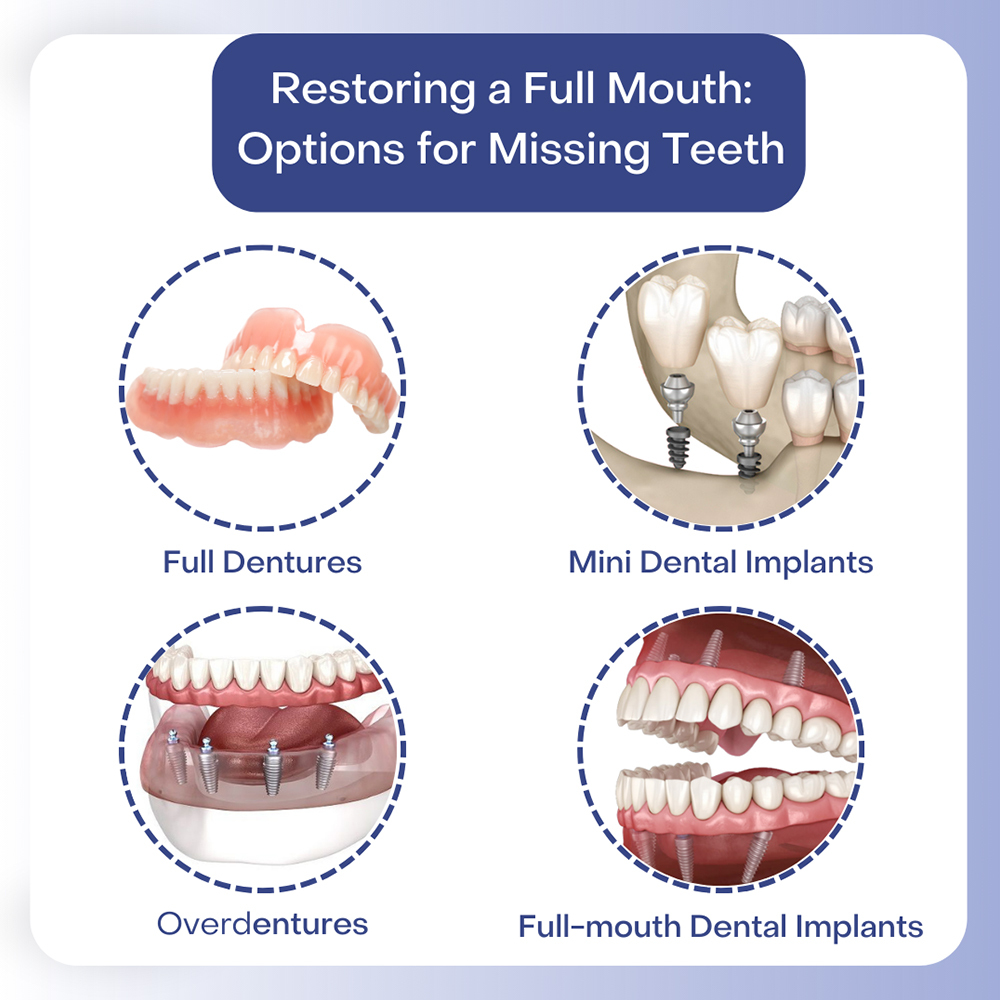Dental Sense Fundamentals Explained
Dental Sense Fundamentals Explained
Blog Article
The Single Strategy To Use For Dental Sense
Table of ContentsAll About Dental SenseThe Basic Principles Of Dental Sense 3 Simple Techniques For Dental SenseWhat Does Dental Sense Mean?
are medical gadgets surgically implanted into the jaw to restore a person's capacity to eat or their appearance. They provide support for synthetic (fake) teeth, such as crowns, bridges, or dentures. When a tooth is lost due to injury or illness, a person can experience problems such as rapid bone loss, defective speech, or adjustments to chewing patterns that lead to pain.Oral dental implant systems contain an oral implant body and dental implant abutment and might additionally consist of an abutment fixation screw. Front tooth filling. The dental implant body is operatively placed in the jawbone instead of the tooth's origin. The dental implant abutment is generally connected to the implant body by the joint fixation screw and expands with periodontals into the mouth to support the connected man-made teeth
(https://blogfreely.net/dentalsense1/5eq6ue3fhs)Framework of The Oral Implant System choosing oral implants, talk to your dental copyright concerning the possible benefits and risks, and whether you are a prospect for the procedure. Things to consider: Your overall health is an essential aspect in establishing whether you are a good candidate for dental implants, just how long it will certainly take to recover, and how much time the dental implant may stay in place.
Smoking might influence the recovery process and decrease the long-term success of the dental implant. The healing process for the dental implant body may take a number of months or longer, throughout which time you normally have a momentary abutment in place of the tooth. the oral implant procedure: Carefully adhere to the dental hygiene instructions provided to you by your dental company.
Dental Sense for Dummies
Implant failing can lead to the demand for an additional operation to fix or change the dental implant system. Restores the capacity to chew Recovers cosmetic look Assists keep the jawbone from diminishing as a result of bone loss Preserves the wellness of the bordering bone and gums Helps maintain surrounding (close-by) teeth steady Improves high quality of life Damage to bordering natural teeth throughout dental implant positioning Injury to the surrounding tissues during surgery, such as sinus perforation Injury throughout surgery (for instance, crack of bordering jawbone) Insufficient feature, such as seeming like the teeth do not attack with each other normally A feeling that the tooth is loosened or turning in area resulting from an abutment screw loosening up Implant body failing (looseness of the dental implant body) due to systemic infection, which may be most likely in people with uncontrolled diabetes mellitus due to neighborhood infection in bone and gums supporting the dental implant body as a result of delayed healing, which may be more probable in clients who smoke Problem cleansing the gum tissues around the dental implant, leading to bad dental health Without treatment periodontal disease Post-surgical numbness due to nerve impingement or damage Always notify health care providers and imaging specialists that you have dental implants before any type of magnetic resonance imaging (MRI) or x-ray procedures.
FDA is not aware of any unfavorable events reported for MRI or x-ray procedures with oral implants. Oral implants systems are commonly constructed from products that comply with worldwide consensus standards of the International Organization for Standardization (ISO) or ASTM International. These standards have information of what makes a risk-free product.

An oral implant is a structure that replaces a missing out on tooth. With screw-like gadgets, the specialist inserts an implant right into the jawbone, and it functions as a support for a man-made tooth, called a crown. A gadget called a joint links the synthetic tooth to the oral implant. The crown is custom-made to fit the person's mouth and match the color of their teeth.
Everything about Dental Sense
Some people are not qualified for oral implant surgery. It is for oral cosmetic surgeons to run on people with: severe illnessuncontrollable metabolic diseasebone or soft cells illness or infectionIf these concerns are resolved, a person can have the surgical procedure. In, oral doctors avoid operating on people with: If people with any of the above undertake dental implant surgical procedure, there is a greater danger of the dental implant falling short.

Dental dental implant surgical treatment is a tailored process. It's not the exact same for everybody. However the complying with gives a general review of what you can expect your dental expert, oral surgeon, periodontist or prosthodontist to do: Put the implant operatively. Provide you time to heal. Affix the post and last crown, bridge or denture.
Next, your cosmetic surgeon will thoroughly position the dental implant right into your jaw. Your doctor will certainly rearrange your periodontals and shut the laceration with stitches. If your implant is near the front of your mouth, your dentist will make a temporary tooth for try here you to wear until you recover. By doing this, you won't have a void in your smile while you recover.
Dental Sense Fundamentals Explained
During the recovery stage, your jawbone needs to fuse to the dental implant. This procedure can take anywhere from three to nine months.
Once your dental implant heals, your dentist can affix the joint (little port post) and your final remediation (crown, bridge or denture). This generally takes concerning one hour to complete and may require a 2nd small surgical procedure. You should not really feel any pain throughout your oral implant procedure since your provider will utilize drug to numb your periodontals.
Report this page